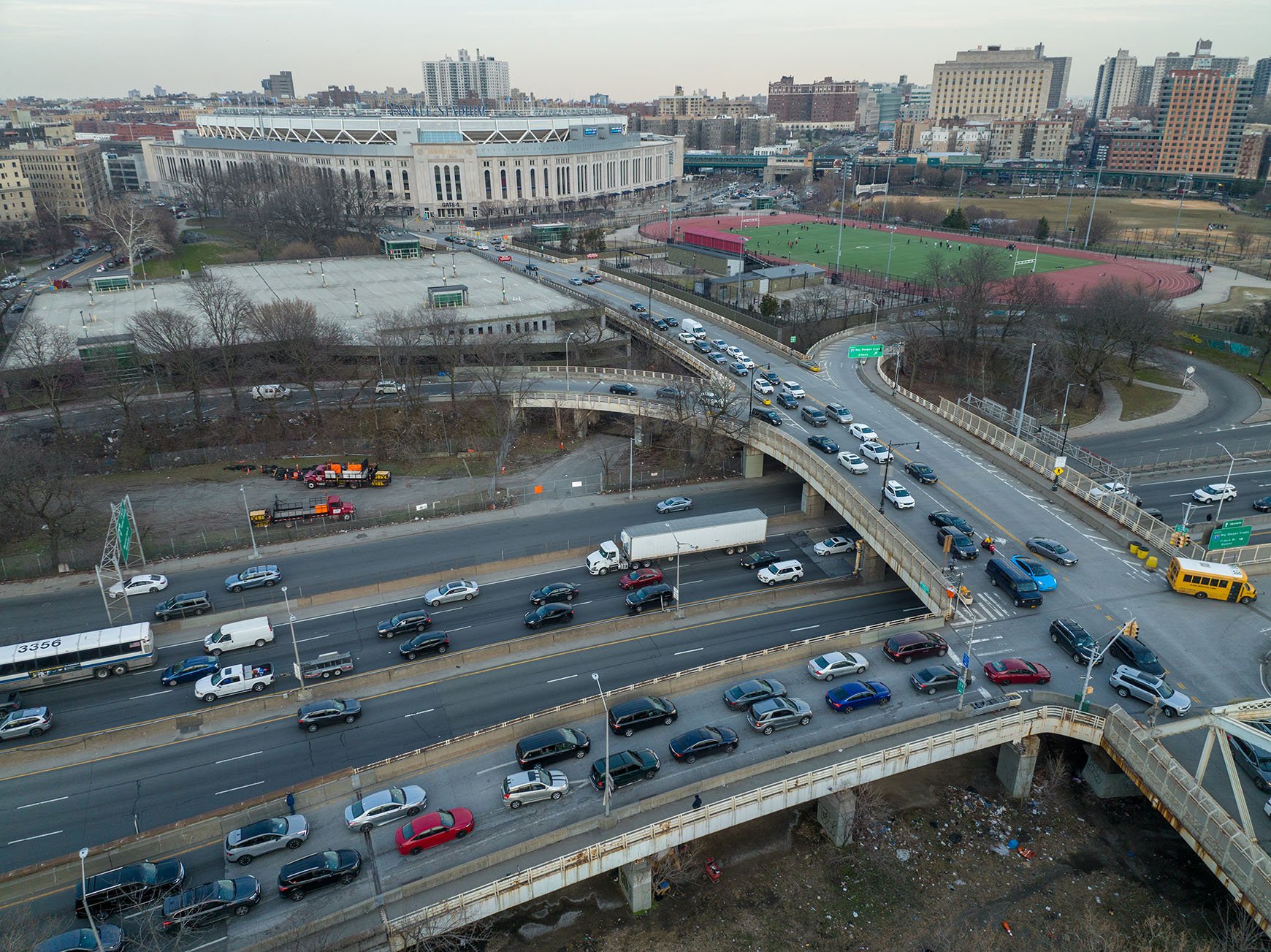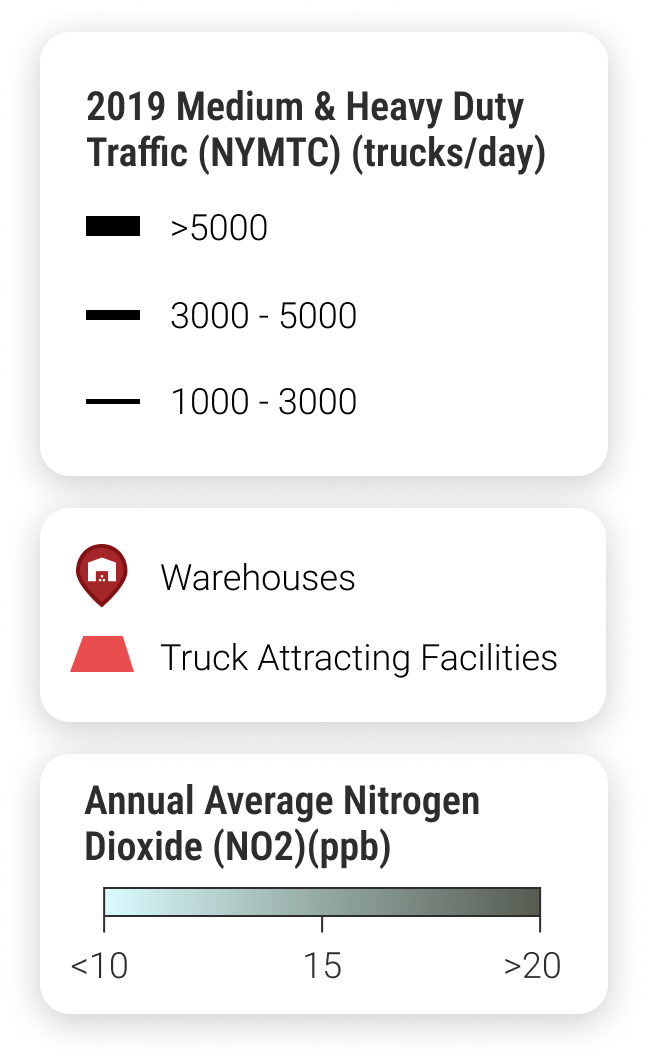
Air pollution and public health in the South Bronx
New York City’s coastline stretches for 520 miles across five boroughs.
All New Yorkers deserve access to the green spaces, community parks and bike paths lining our city’s shores, but in the South Bronx, local access to the waterfront is nearly non-existent.
Instead, our waterfront is crowded by industry: waste transfer stations, warehouses, peak power plants, printing presses and more.
Heavy truck traffic on city streets
These facilities are magnets for diesel trucks, which emit harmful pollutants–like nitrogen dioxide and fine particulate matter–that contribute to the development of chronic health conditions like asthma, heart disease and diabetes.
The thousands of trucks rumbling through our community each day–on our neighborhood streets, past our schools and along the major expressways that slice through Port Morris and Mott Haven–are polluting our air and making us sick.
The constant presence of diesel trucks on our streets is no accident. For years, the South Bronx, like other communities of color and low-income areas across the country, was targeted by industries—warehouses, waste transfer facilities, power plants, landfills—that emit harmful chemicals into the air and attract polluting diesel trucks.
Additionally, a historical legacy of disinvestment in our community has resulted in residents of Mott Haven and Port Morris facing barriers in access to resources like affordable housing, transportation, education and open green space. These social determinants of health interact with environmental inequities, leading to worsened long-term health outcomes for our community.
Children, pregnant people, seniors and people with existing respiratory and cardiovascular disease are especially susceptible to the health harms of air pollution exposure.

Nitrogen dioxide, a key traffic-related air pollutant, contributes to 21,000 new cases of childhood asthma every year in the New York metro region, and asthma rates vary drastically from community to community.
The South Bronx has some of the highest childhood asthma rates in the country. And while air pollution exposure is not the only thing driving this disparity between the South Bronx and other neighborhoods, new research indicates that more childhood asthma in the South Bronx is attributable to traffic-related air pollution than elsewhere in the city.
An estimated 20% of all cases of childhood asthma in the region are attributable to pollution, but in communities like the South Bronx with the most traffic-related air pollution, that figure is more than 30%.
The lack of tree cover and green space in the community also makes the South Bronx hotter than other parts of the city, and extreme heat can worsen air pollution and trigger asthma attacks.
For traffic pollution, proximity matters
Living adjacent to truck traffic is a major public health concern in the South Bronx. For years, experts have warned that children who attend school within 500 feet of a major road have a greater chance of suffering from serious health conditions–everything from asthma, heart disease, increased cancer risk and decreased ability to focus and learn in school.
These NO2 concentrations came from the New York City Community Air Survey (NYCCAS), which is an annual program that combines stationary air quality monitor data with New York City land use data to model air quality across the city.
New York lawmakers recently passed a bill making it illegal to site a new school within 500 feet of a major roadway–but in the South Bronx, five schools where nearly 2,000 students learn and play are already there.

Advocating for change
South Bronx Unite envisions a community where everyone is thriving because we have equitable access to clean air, open spaces and basic public health resources. We’re working to improve public health equity by reducing the unequal impacts of air pollution.
Through participatory decision-making for public policies and community development, we are building a healthy, resilient community.
To address the poor air quality, South Bronx Unite is building on our advocacy for clean air by launching a first-of-its kind air quality monitoring project. Our network of 65 air monitors across Mott Haven-Port Morris will track particle pollution and gases that cause asthma, heart disease, diabetes, and other diseases. This data will help us push for policies for clean air while empowering our community with real-time air quality information. We deserve clean air just like everyone else!
See below to navigate through real-time data!













